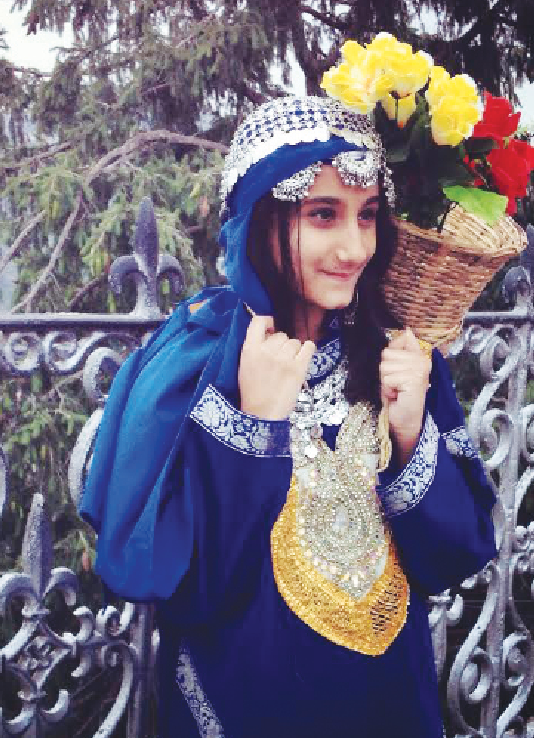Land of the Free, Home of the Brave
Immigrant student shares story, cultural differences
Last September, sophomore Tanushree Pant emigrated with her parents, aunt and sister from Nepal to the United States.
“My parents wanted my sister and I to have [a] better education,” Pant said. “[The] U.S. is known to be a country with great opportunities.”
Pant said in moving she had to leave behind many family members and friends.
“I was really nervous — I was sweating in the car while we were going to the school — new place, new culture, different people and their ways,” she said. “It was not as scary as I thought it would be, [and] my second semester was far better than my first. It was not what I was expecting it to be like. I thought high schools [were] like the school I saw in Mean Girls, but nothing was similar.”
As soon as she got to the U.S., Pant said she immediately noticed the many differences between the country and Nepal.
“The education here amazes me the most,” she said. “I never expected that I would be so excited and interested just to go to school every day. Everything for me is so new and fascinating. Teachers — and the school itself — do not force someone to do or be anything and everybody has the opportunity to do the things they like [and to] talk to the teachers if they feel like they’re not learning [well] enough. In Nepal, people want their kids to be either a doctor or an engineer because they’re considered high professions.”
Though she enjoys many aspects of America, she said there is one thing that concerns her.
“I think the laws on gun control need to change and people shouldn’t be allowed to freely buy guns — which can be really scary — and put the country in danger,” Pant said.
Pant said the main distinctions in culture don’t end at education and laws.
“The biggest difference would be the facilities,” she said. “Nepal has a problem with electricity and people only have electricity in their houses five to six hours per day. The daily things that are common to Americans [are] hard for people in Nepal to do.”
In Nepal, Pant lived near the country’s tallest building, Dharahara. However, despite it being a popular tourist attraction, she said she never got the chance to visit the tower.
“It was known to be one of the most visited places in Kathmandu,” she said. “The majority of people would go there to see the city from the top.”
Pant said she finally made plans to visit the tower with her family to celebrate her fourteenth birthday.
“We talked, and [we] agreed to go after lunch,” she said. “We had just finished eating and were chilling, watching T.V. The earthquake occurred exactly at noon. Everything started shaking like never before.”
On April 25, 2015, Nepal experienced the worst natural disaster to affect their country since 1934, when a 7.8 magnitude earthquake struck the country. The Dharahara tower collapsed from the base up, crushing and killing sixty people.
“The earthquake left me in a shock for a couple of days — not knowing what just happened, why did it happen and what will the future of Nepal look like,” she said. “Seeing people lose their loved ones, their shelter and struggling just to be alive just broke me.”
She said she was grateful she and her loved ones were safe.
“After that, the thing that started to bug me was, what if we had gone to the tower that day?” she said. “I felt really blessed. Everything happens for a reason, maybe mine was to be alive.”
Pant said people often assume she moved to Kansas because of the earthquake. However, she is an immigrant — not a refugee.
“It was difficult,” she said. “My parents had filed an immigration form when I was born in 2001, and it took 13-14 years for the process to be finally done.”
According to MigrationPolicy.org, Nepal has had a net migration of negative 372 thousand people between 2010 and 2015.
“The immigration process is not easy at all, people struggle a lot to get through it,” she said. “People leave their everything just to come to the U.S. for a better life and they are working really hard for it. There are still many people who want to come to the United States but do not have that opportunity.”
Pant said she plans on visiting Nepal next February.
“I most definitely miss my relatives, since I grew up seeing them and visiting them every week,” she said. “Being this far from them is sometimes saddening.”
Even though she wishes she could see her family members in Nepal more, she said she is glad to be living in America.
“I am still thinking about what I really want to do in the future, but most likely I will go into the field of business and entrepreneurship,” Pant said. “I am strongly planning to stay in the United States forever and make a good living here.”

Alli Williams is a co-editor in chief for “The Tiger Print.” She works as an assistant teacher at a math tutoring business. Her favorite part of journalism...




